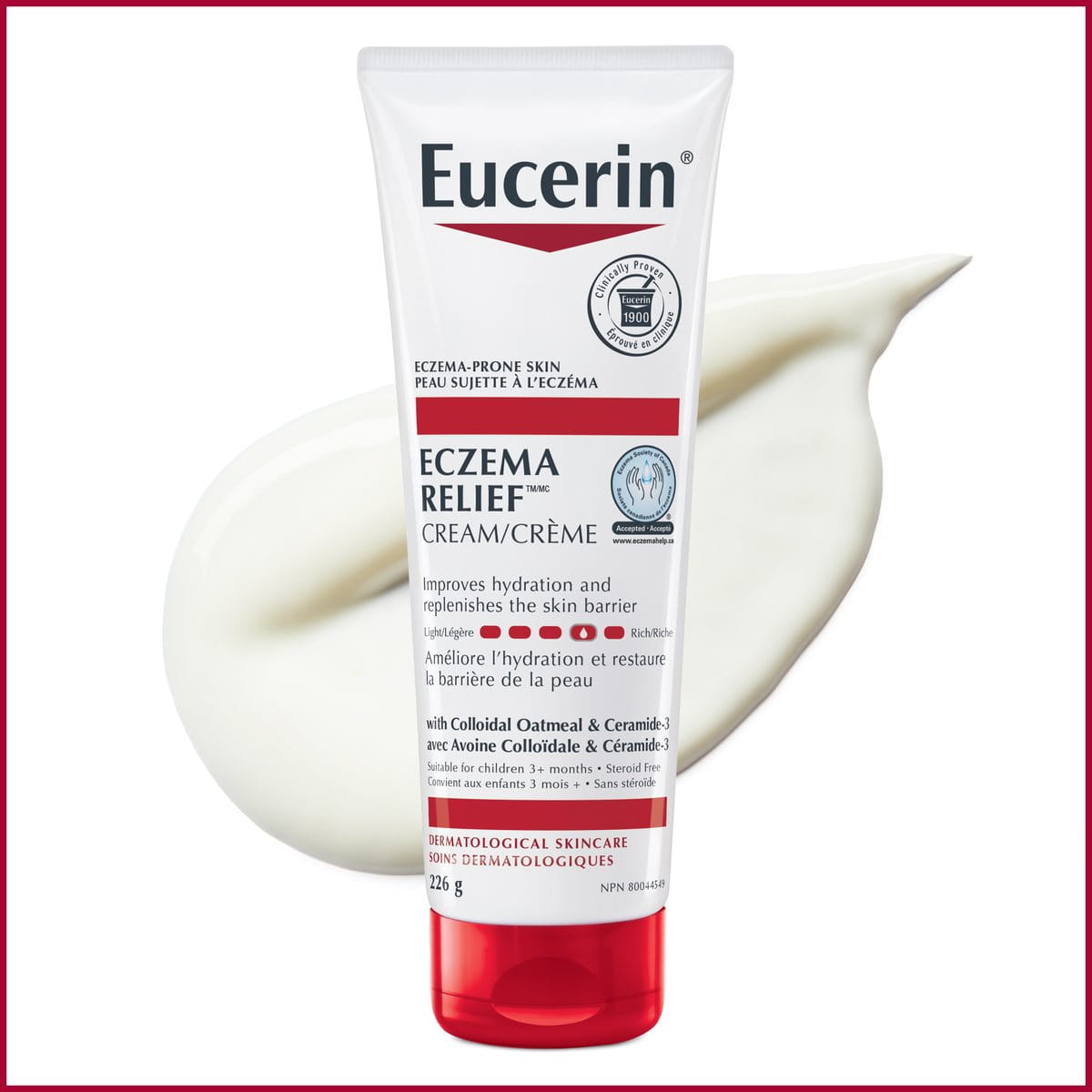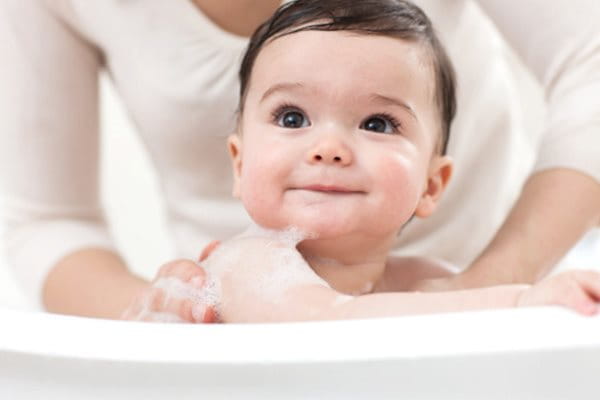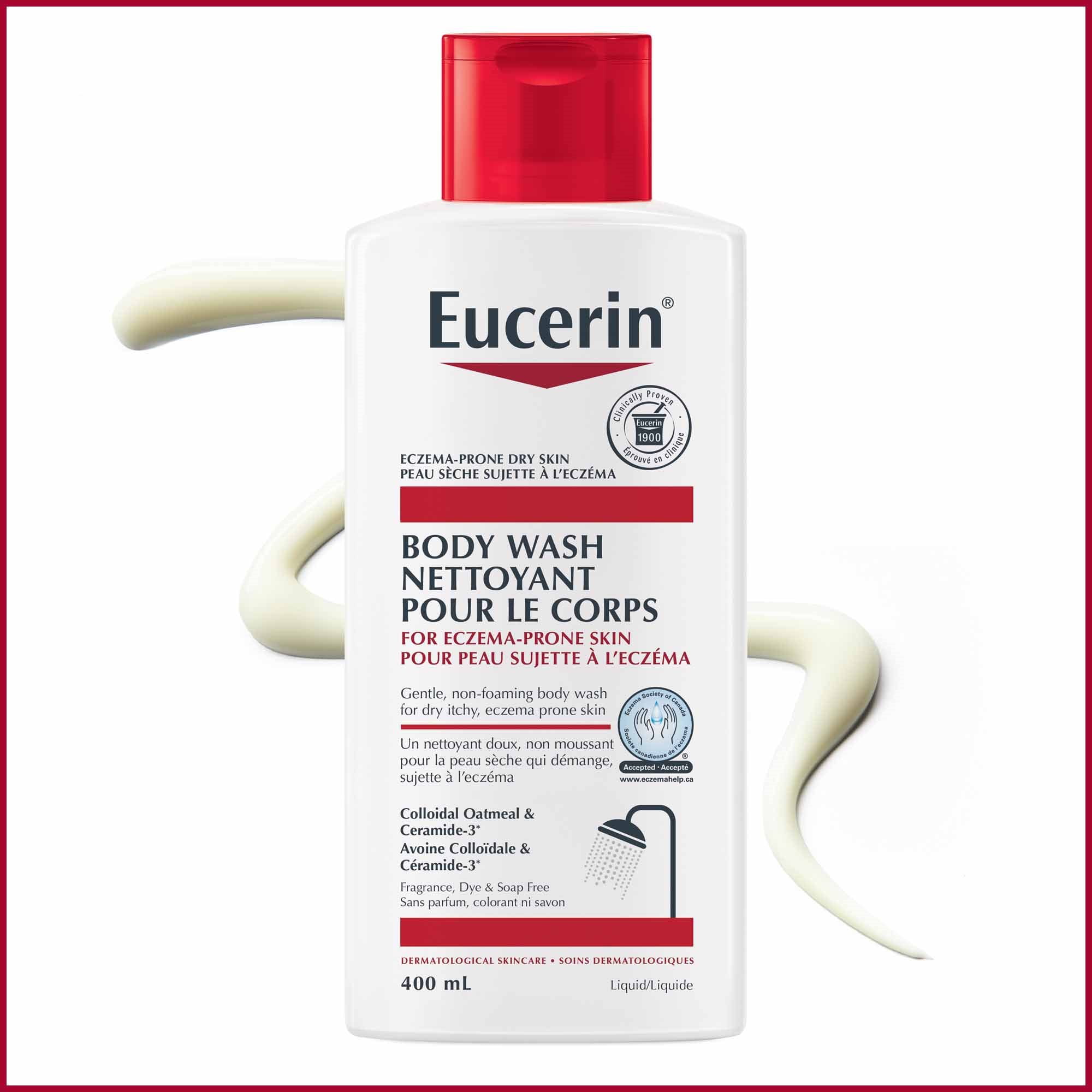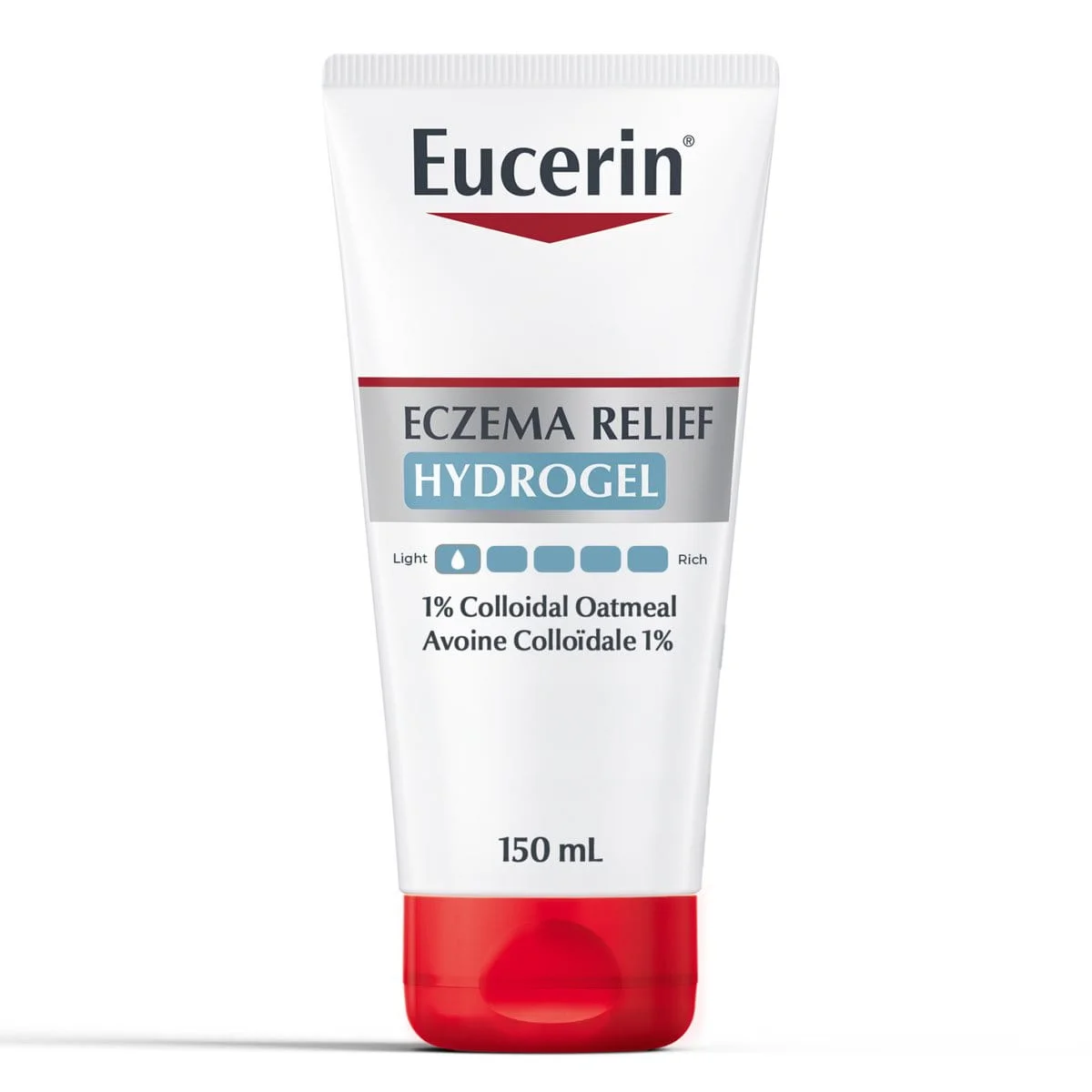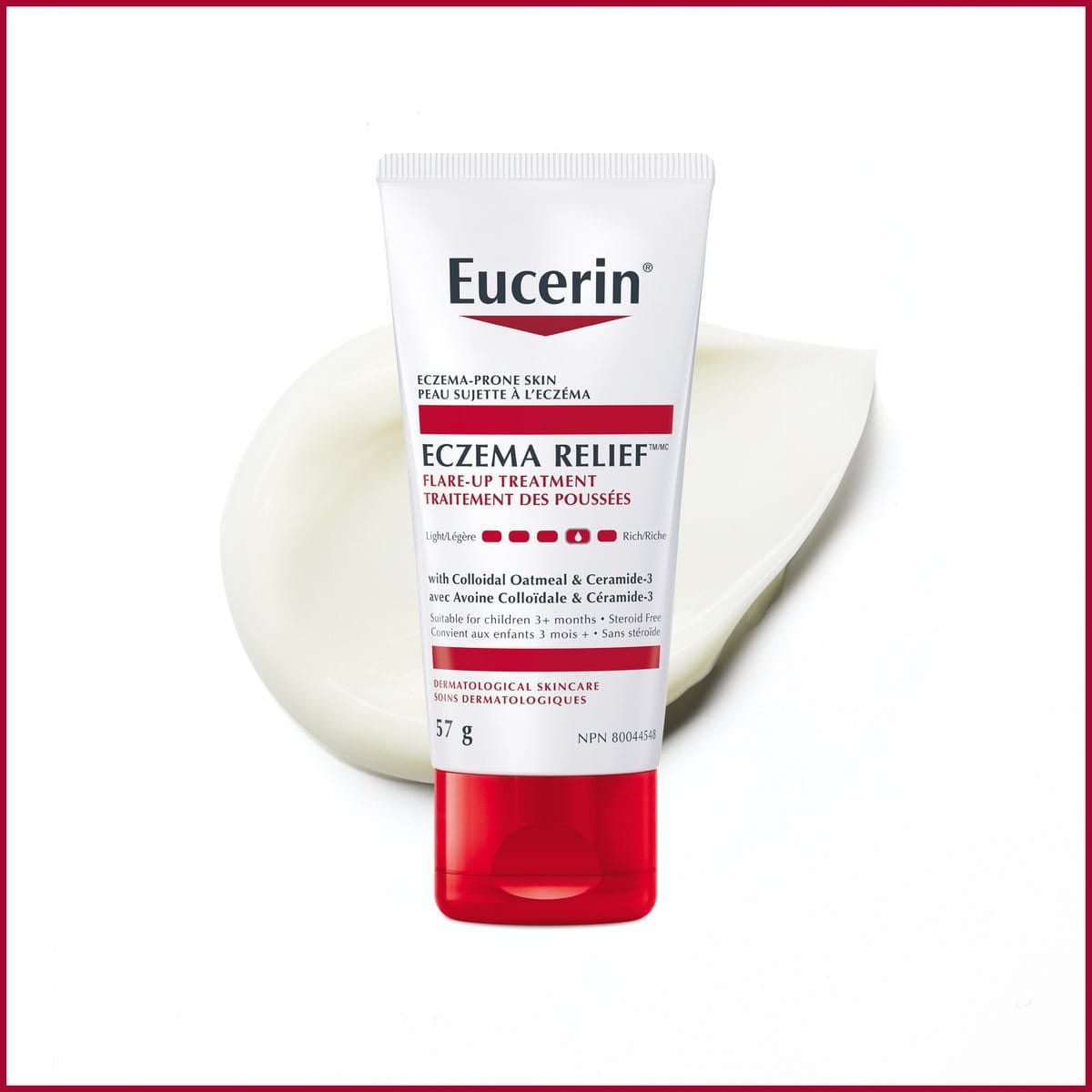If your baby has patches of dry, flaky and rashy skin, they may be suffering from eczema. It’s estimated that Atopic Dermatitis, the most common type of Eczema, affects up to 17% of the Canadian population at some point in their lives. This type of eczema is hereditary and almost always starts between infancy and age 5.
Though eczema isn’t contagious, it can be distressing for parents and cause discomfort for babies. This article explains how to care for eczema in babies. Gentle and regular skincare helps to keep young skin moisturized, prolonging the periods between flare-ups and reducing their severity. We also look at how to adjust your baby’s skincare routine to suit the phase their skin is in.
